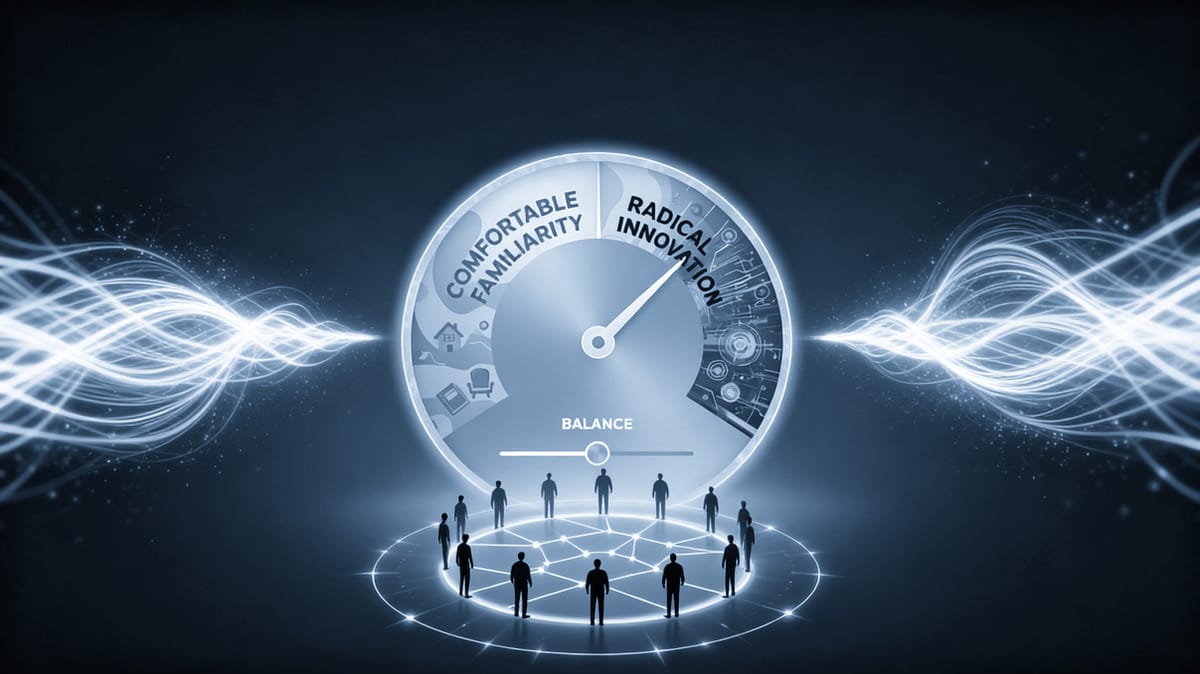Most Advanced, Yet Acceptable - The Human Side of MAYA
Humanising transformation applies Raymond Loewy’s MAYA principle - Most Advanced, Yet Acceptable - to change. Resonant Leadership explains the “why”, builds trust, and fosters belonging. Progress comes in small steps, turning delivery into adoption and communities into performance.

When Raymond Loewy, the father of industrial design, coined the phrase “Most Advanced, Yet Acceptable” (MAYA), he was not only talking about sleek locomotives, streamlined refrigerators or the classic Coca-Cola bottle. He was pointing to a universal truth: progress works best when it balances daring novelty with comforting familiarity. Push too far and people resist. Do not push far enough and people lose interest.
Seventy years later, Loewy’s maxim applies not just to product design but to the most pressing issue in corporate life: transformation.
Companies invest heavily in change programmes, digital overhauls and strategic resets. These projects often meet their deadlines, launch their products and publish their roadmaps, and yet, months later, many leaders ask why the business has not really changed.
The reason is simple: delivery is not adoption. A new platform, an agile workflow or a corporate rebrand is worthless unless people accept it, use it and make it part of their working lives. Transformation fails when leaders forget the human side.
Humanising transformation means recognising that employees are not cogs in a process but human beings with identities, fears and hopes. Success is not measured only in dates and deliverables but in trust, community and shared purpose. If people understand why change is happening, not just what is happening, they begin to see themselves as co-authors of the journey. That builds belonging, which in turn strengthens performance and resilience.
This is where MAYA intersects with Resonant Leadership. To drive transformation, leaders must find the sweet spot: ambitious enough to inspire, familiar enough to be trusted. Resonant Leadership is not about authority alone but about emotional connection, empathy and trust. It is about creating harmony between vision and acceptance, about tuning in to what people feel as well as what they know.
This is where the simple but profound sequence comes in:
“Know me. Like me. Trust me. Follow me.”

People will only follow leaders who explain the challenge with honesty, who demonstrate empathy, and who act with integrity. Without followers, leadership is a title, not a reality. Without resonance, transformation is just an expensive exercise in change management theatre.
The lesson is clear. Transformation is not only a technical act, it is a human act. It is not enough to deliver what is most advanced. It must also be acceptable. Loewy’s design principle, reframed through Resonant Leadership for the twenty-first century, may be the most valuable leadership tool of all.
Leader’s Playbook: Resonant Leadership with MAYA
A practical framework for executives and change leaders.
Step 1. Frame the Why (Know Me)
- Begin with the cause of change, not the mechanics.
- Tell a story: what problem are we solving, what opportunity are we seising?
- Use language people understand, not jargon.
Checklist:
☐ One clear sentence on why change is needed
☐ Evidence that connects to daily realities
☐ Story that links to purpose and vision
Step 2. Design for Acceptance (Most Advanced, Yet Acceptable)
- Balance innovation with familiarity.
- Pilot new ideas in small increments so people can experience progress without fear.
- Anchor radical change in something recognisable.
Checklist:
☐ Is this initiative inspiring but not alienating?
☐ Are we introducing it in manageable steps?
☐ Does it connect to existing strengths or cultural norms?
Step 3. Build Community (Like Me)
- Create forums where people can share concerns, feedback and ideas.
- Encourage champions who advocate for the change among peers.
- Celebrate small wins collectively.
Checklist:
☐ Visible networks of advocates
☐ Safe spaces for dialogue and criticism
☐ Regular recognition of progress
Step 4. Earn Trust (Trust Me)
- Be consistent in words and actions.
- Acknowledge difficulties honestly, do not oversell.
- Share decision-making where possible to create ownership.
Checklist:
☐ Clear governance and transparency
☐ Leaders modelling behaviours expected of others
☐ Mechanisms for feedback leading to visible action
Step 5. Mobilise Momentum (Follow Me)
- Translate trust into collective action.
- Set achievable short-term milestones that demonstrate progress.
- Make following the change the easier and more rewarding choice.
Checklist:
☐ Short-term wins aligned with long-term vision
☐ Incentives that reward adoption
☐ Ongoing storytelling that connects back to purpose
Step 6. Sustain Humanity Beyond People, Process and Technology
- Move beyond the standard People, Process, Technology model.
- Integrate Humanity: the emotional, cultural and ethical dimension of change.
- Remember that happier, more connected people create more profitable and resilient businesses.
Checklist:
☐ Have we considered emotional impact alongside operational impact?
☐ Does this change strengthen belonging and meaning?
☐ Are we measuring adoption, not just delivery?
Outcome
By following this playbook, leaders can apply the MAYA principle through Resonant Leadership, ensuring that change is bold but not alienating, humane as well as strategic. In doing so, they shift transformation from being a programme to being a movement.
